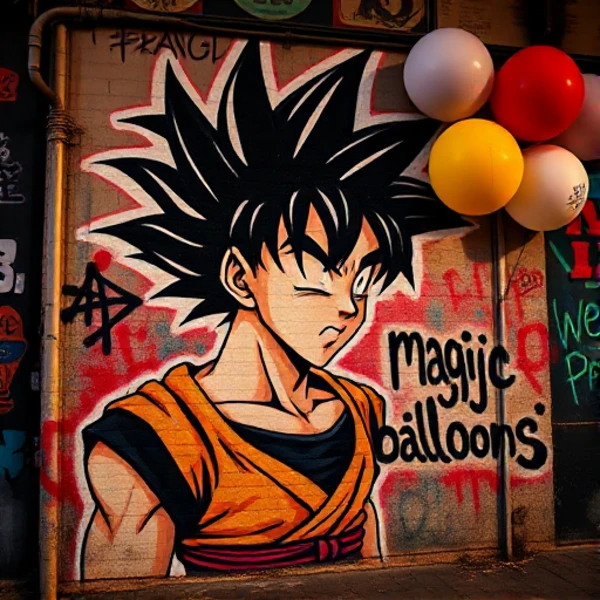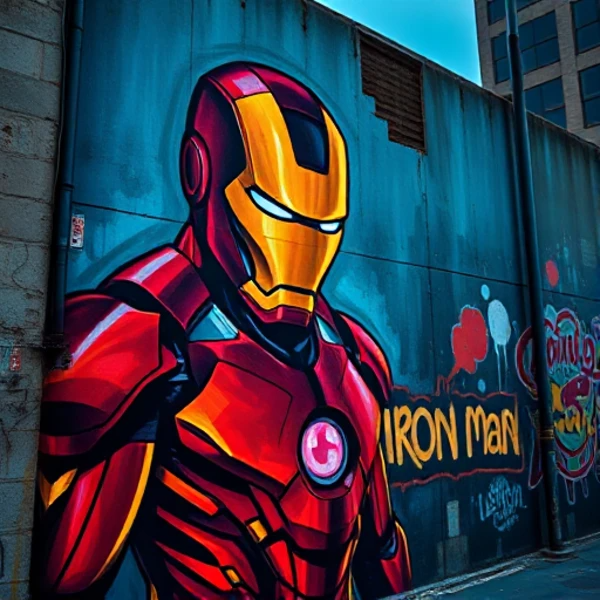Notifications
7 minutes, 9 seconds
-76 Views 0 Comments 0 Likes 0 Reviews

In today's digital age, the fusion of technology and creativity is creating unprecedented opportunities for artists and enthusiasts alike. Graffiti, once confined to the walls of cities, has evolved into a vibrant art form that transcends boundaries and expresses voices from diverse backgrounds. With innovative tools like Magic Hour, the art of graffiti is more accessible than ever. This cutting-edge platform allows users to transform simple words into striking graffiti art instantly, bringing visions to life with just a few clicks.
Graffiti art is a unique expression of individuality and cultural identity. Originally regarded as mere vandalism, it has increasingly gained recognition as a legitimate form of art that communicates powerful messages. Artists use color, style, and typography to reflect the complexities of urban life, often addressing social, political, and personal themes. The allure of graffiti lies in its ability to evoke emotion and provoke thought, making it an impactful way to engage with a community. As graffiti continues to evolve, tools like Magic Hour help individuals tap into this expressive art form, expanding its reach and relevance.
Magic Hour harnesses advanced artificial intelligence (AI) to convert text prompts into vibrant graffiti designs. The user-friendly interface allows anyone, regardless of artistic skill, to produce stunning artwork rapidly. By simply entering a word or phrase that resonates with them, users can see multiple interpretations generated by the AI in real-time. This immediate feedback loop encourages experimentation, inviting individuals to explore various visual styles and artistic ideas that they might not have considered otherwise.
One of the most engaging aspects of using Magic Hour is the level of customization available to users. After the initial graffiti design is generated, individuals have the opportunity to modify elements such as colors, fonts, and overall styles. This customization allows creators to shape the artwork according to their unique vision, ensuring that the final piece is a true reflection of their identity and message. Whether it’s choosing a fiery color palette to convey passion or selecting a bold font to emphasize strength, the possibilities are endless. This tailored approach not only enhances the visual appeal of the artwork but also fosters a deeper connection between the creator and their piece.
The versatility of Magic Hour extends its utility beyond personal artistic expression. In the realm of branding and marketing, businesses can harness the captivating visuals generated by the platform to create eye-catching promotional materials. The graffiti-style designs can be used for advertisements, merchandise, or even social media content, allowing brands to engage effectively with their target audience. Additionally, educators can integrate Magic Hour into art programs, using it as a tool to teach students about graffiti culture, design principles, and the importance of artistic expression in societal contexts. This broad applicability makes Magic Hour a valuable resource across numerous industries.
As more users engage with Magic Hour, a thriving community of creative individuals begins to emerge. Artists and enthusiasts share their graffiti creations on social media, motivating one another and fostering a culture of inspiration and collaboration. Online forums and groups dedicated to Magic Hour provide platforms for users to exchange ideas, share techniques, and offer constructive criticism. This sense of community encourages growth among artists, enabling them to refine their skills and develop their unique styles. It also highlights the importance of collaboration in the creative process, reminding individuals that art is often enhanced by shared experiences and perspectives.

The introduction of AI-powered tools like Magic Hour raises intriguing questions about the relationship between technology and artistry. Traditional artists often rely on physical mediums and techniques, while tools like Magic Hour represent a new frontier in creative expression. By simplifying the process of generating art, technology enables artists to focus on conceptualizing their ideas rather than grappling with technical execution. This elevation of creativity over mechanics marks a significant shift in the art world, breaking down barriers and allowing a broader range of voices to participate in artistic conversations. As the lines blur between traditional and digital art, the potential for innovation within the graffiti genre expands dramatically.
As technology continues to advance, the future of graffiti art looks bright and full of potential. The capabilities of platforms like Magic Hour will likely evolve as AI technology becomes more sophisticated, offering users increasingly tailored experiences. Future iterations of the tool may include enhanced features such as augmented reality previews or interactive capabilities that allow users to see their designs in real-life settings. This continuous innovation will enable artists to push the boundaries of their creativity and explore new ways of engaging with the medium. With every advancement, the potential of graffiti art as a form of self-expression and social commentary will continue to expand.
In conclusion, Magic Hour serves as a revolutionary tool for transforming words into captivating graffiti art in an instant. By leveraging AI technology, it democratizes the creative process, making it accessible to anyone with a message to convey.

